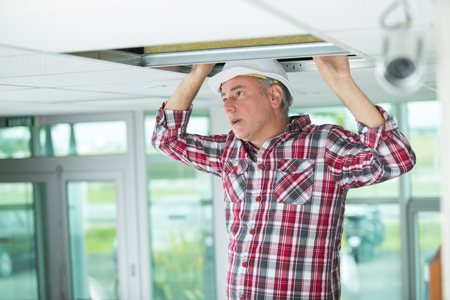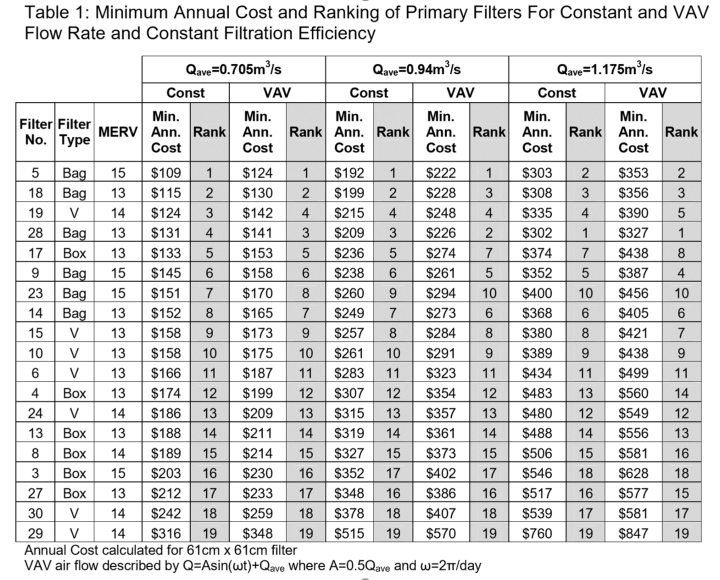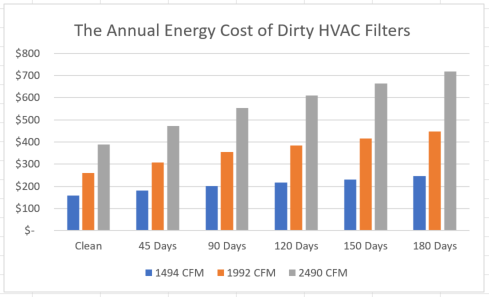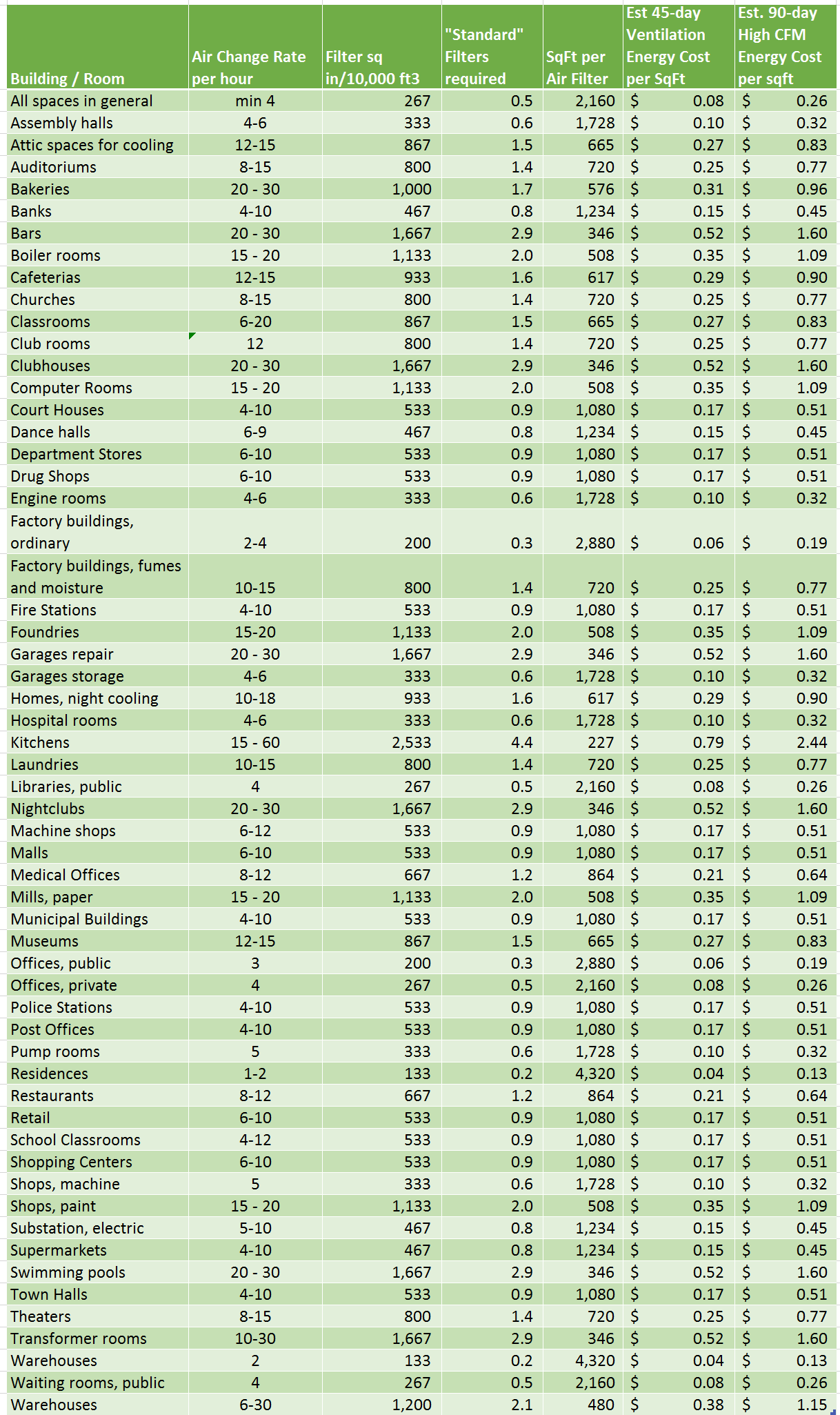Dear Mr./Ms. Landlord, do you know the true costs of dirty HVAC filters?

In the past year I have seen annual HVAC maintenance costs in our little commercial office building jump from $12,729 to $62,317. As a “triple net” tenant, these costs are proportionately my responsibility, but they are also costs I have little visibility to, or control over. Dear Mr. Landlord, I want a productive and sustainable building, with better visibility and control of operating costs!
Landlords that practice break/fix operations end up surprising tenants with outages, unexpected repair costs, and higher operating costs. Neglecting basic maintenance, like failing to regularly change air filters, will lead to costs quickly spiralling out of control. How does a $16 disposable air filter become a $1,000 annual cost to the tenant?
Earlier  this year I posted on LinkedIn, some research at the University of British Columbia (UBC) on the energy cost of HVAC filters by Montgomery, Green, Rogak & Bartlett. Their work calculated the minimum annual cost of operating individual air filters in a range of $109 to $847.
this year I posted on LinkedIn, some research at the University of British Columbia (UBC) on the energy cost of HVAC filters by Montgomery, Green, Rogak & Bartlett. Their work calculated the minimum annual cost of operating individual air filters in a range of $109 to $847.
Yes, that’s right, a $16 air filter actually could cost a minimum of $847. That’s the direct energy cost, for the fan that is pushing air through a clean filter (hence the minimum).
But of course filters are only clean on the day they are changed. Flick the switch and they pick up dirt, at a rate depending on particulate load in the incoming air, and the volume of air pushed through the media. After 90 days, particulates will partially clog the filter, and annualized energy costs will increase by an estimated $44 to $165, based to the UBC research model. After 180 days, these costs will double, and could reach $330 in increased annual energy costs, per filter.

Calculated annual energy costs at different intervals and air speeds.
When you add the costs of the filter media itself, the labour to replace the filter, consider productivity loss from poor ventilations, and factor in the loss of efficiency due to a dirty filter, it’s easy to see annual costs of $1,000 per filter, or more.
Oh, and there are lots of filters

Data source: Engineeringtoolbox.co
Air filters have a maximum air flow per square inch of media, so the number of filters required can easily be calculated. For retail this means about 1 filter for every 1,080 square feet. For offices, the number is 1 filter per 2,100 square feet, while pubs and kitchens may require a filter every 200-300 square feet.
So, “clean filter” ventilation alone, can cost $0.08 per square foot, or $1.60, and that’s without adding heat or cooling.
Dirt is inevitable, and costly
Montgomery, Green, Rogak & Bartlett, at UBC, used 1.9 micrograms of particulates per cubic meter, to calculate how quickly dirt will accumulate on air filters, and calculated the energy cost of the “dirt” in MJ/gram. I converted this to dollars and cents.
The best performing filter (see their Table 1 below) , according to Montgomery et al, was the Type 10 V. The research team estimated that the energy cost per year for a clean, brand new filter was $158, at low air volume. The same dirty filter, after 90 days, is now $202 in annualized energy cost, an increase of 28 percent.
If the equipment is undersized, a higher air volume may be required for adequate ventilation. This shortens the life of the equipment air, and exponentially increases the cost of energy to push more air through the media. A new filter, at higher volume flow (2490 CFM), would consume $389 when clean, and $554 annually, at 90 days. That’s an increase in energy consumption of 42 percent, in just 90 days.
Dear Mr. Landlord, I want increased visibility to operating expenses!
I hate surprises, and when I see a $50,000 increase in HVAC operating costs, I suspect it’s because the building hasn’t been properly maintained. Wouldn’t you?
When I open another office, I will not sign a lease until I know it’s in a well maintained building. I want to work with a landlord willing to work with tenants to collaboratively manage our space with real-time visibility to operating expenses. Who’s with me on that?
